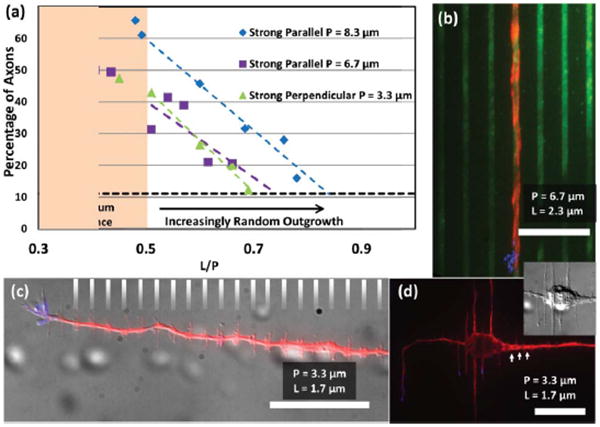Fig. 4.

Axonal Guidance Fidelity: Investigating L/P (a) Strongly guided axonal outgrowth is prevalent when L/P is small, that is, when line widths are small relative to the periodicity, largely independent of the actual value of P. However, as L/P increases above a value of 0.5, dominantly parallel (P = 8.3, 6.7 μm) or perpendicular (P = 3.3 μm) outgrowth decreases. The percentage of axons experiencing strong guidance approaches a level expected by random outgrowth (horizontal dashed line at 11%). Strong parallel guidance is defined as an outgrowth angle from 0°–10° (strong perpendicular: 80°–90°) relative to the micro-lines. (b) When L/P is small on P = 6.7 μm micro-lines, the likelihood of strongly parallel outgrowth is maximized. (c - d) For small L/P on P = 3.3 μm, strong perpendicular outgrowth is maximized. Vinculated growth, predominant dendritic alignment to the micro-lines, intra-somatic microtubule alignment, and increased microtubule density at gaps (arrows) are all evident in these images. The gray hash lines in (c) indicate the location of the micro-lines. All scale bars: 20 μm.
